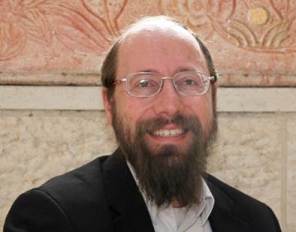Beit Midrash
- Shabbat and Holidays
- Jewish Holidays
- Tu Bishvat
Two sources of life for the tree: it draws from the moisture of the ground, and absorbs the forces that are embedded in the soil from which it grows; its roots, they assure its certainty in standing against any wind. At its tree-top, the tree enjoys the light and the dancing rays of the sun; on its side, flowers emerge luring the bees to fertilise them.
Two movements of the tree: growth downward, towards the water, towards the soil, from which it grows, and growth upward, towards the sun, from which it derives its life-giving and nourishing warmth and light.
The roots and the tree-top at the extremities of the tree are balanced. As the size of the roots, so is the measure of its branches and leaves. Without roots, any ordinary wind will bend the tree and break it. Without the tree-top, the tree remains - dry wood.
Within the tree, there is a direct connection of moisture between the roots and its tree-top. That same bond between the roots and the leaves, is the very force that guarantees the tree its life. Cut off that bond, and the tree will be destroyed (cut-off and dried out).
Every Jew is like the tree of the field. He is rooted in the solid ground of his ancestors’ legacy, roots of soul and tradition, and turns his head upwards yearning higher and yet higher heavenward. Ancestors’ legacy and love of G-od are those that guarantee the life of man - the tree - within the people of Israel.
The moisture, the water within the tree, is, for the Jew, the wisdom of the Torah. The words of the Torah are compared to water: "It is a tree of life for those who grasp it" (Proverbs 3,18).
T"U BiSHVAT is the New Year of trees, "since most of the year’s rain had ceased" (Babylonian Talmud, Rosh HaShana 14a). The roots of the tree have already become satisfied from the water which came from below, and the tree-top’s leaves start to sprout. They demonstrate and confirm that indeed, a bond exists between the roots and the leaves; between our ancient beginnings and the renewal of our sublime aspirations; between the Lower and the Higher; between Earth and G-od’s Heaven above.
From the book: In the Wake of Festivals and Solemn Days
Thoughts on the Festivals and the Weekly Haftaroth .
By: Rabbi Yerachmiel Yaakov (Eugene Jacob) Duschinsky zt"l, Av-Beth-Din South Africa.
Sefer-Hermon Press, New-York, 1982.
Translated from the original Hebrew by Rabbi Ron Hoffberg and Rabbi Michael Dushinsky,
B"H, Shevat 5764, February 2004, Prague, Czech Republic.

THANK TRUMP BUT SING TO G-D & the IDF- Parshat Beshalach & Tu BiShvat
Rabbi Ari Shvat | Shevat 5785 11

Tu B'shvat - A festival of renewal
Rabbi Yaakov Asher Sinclair | Tevet 28 5781



















